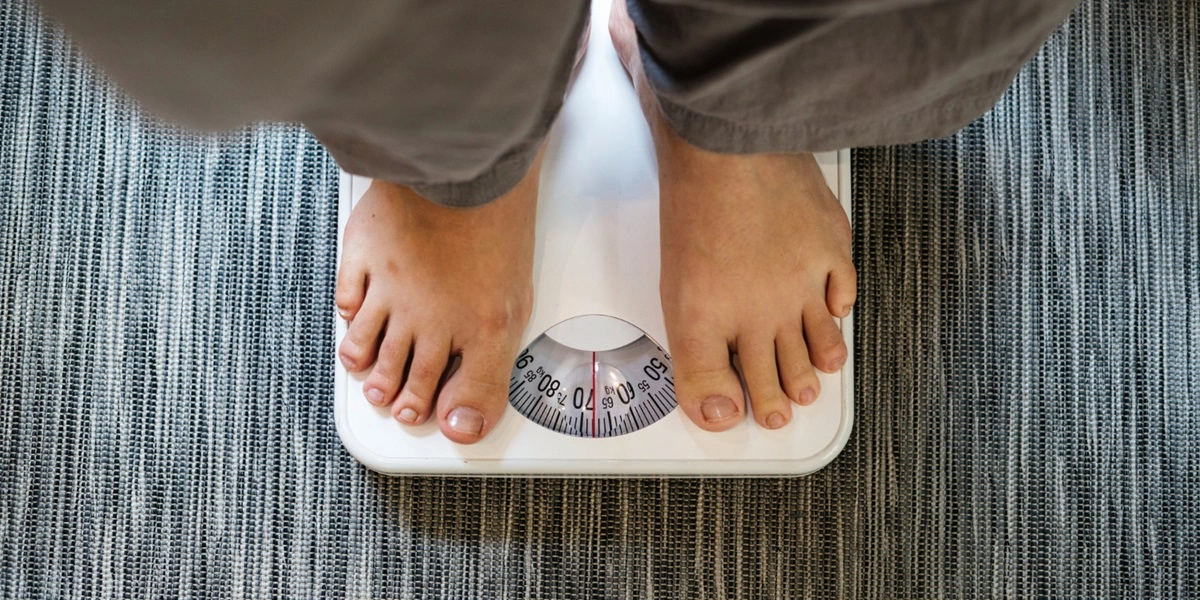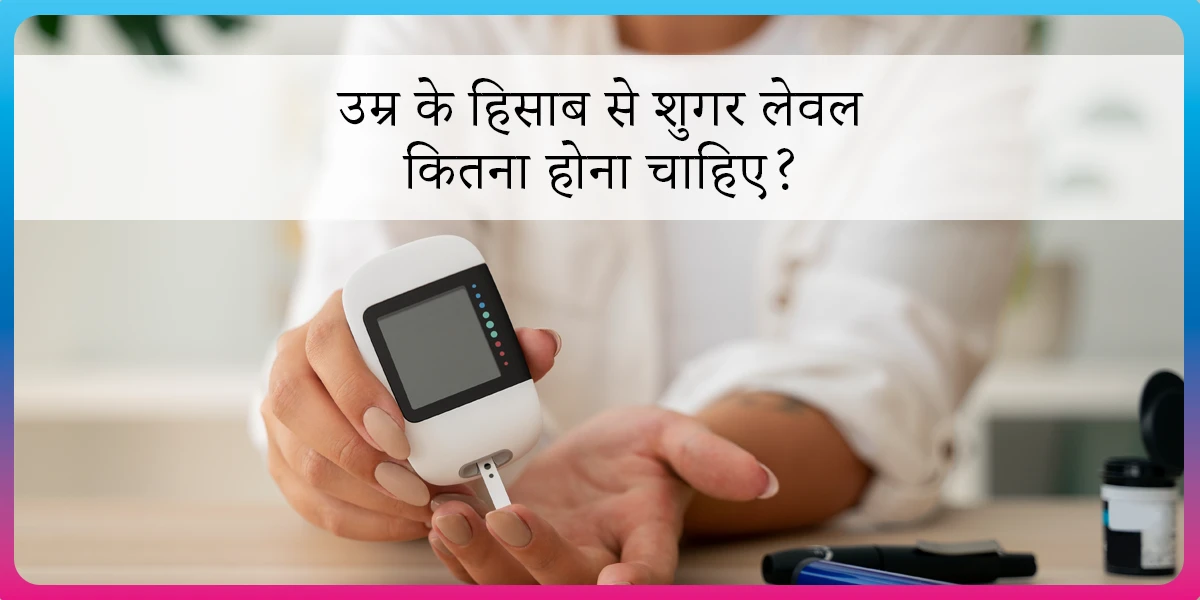What Should Be Your Ideal Weight?

Do you ever wonder, “Am I of ideal weight for my height?”
If the answer is yes, you’re definitely not overthinking. It’s a question most of us have had at some point, especially during that annual health check-up.
Let’s be real. Long hours glued to our desks, irregular meal times, and the ever-present temptation of chaat or sweets make healthy weight maintenance more challenging than ever. Movement, for most of us, means switching between screens or rushing from one work call to another. And when hunger strikes, we often reach for what’s quick, not what’s right!
Whether your lifestyle is sedentary or active, one thing remains the same – the way we eat and move (or don’t) shapes our overall health!
So, what’s considered a healthy weight? Is there a number we should aim for on the weighing scale?
Don’t worry. This blog has the answers. We’ve put together a height-weight chart to help you understand where you stand and whether a few minor tweaks could make a big difference.
Let’s start.
What Is An Ideal Weight?
We often hear terms like “ideal weight,” but for your health, it’s not just about a number on the scale. If your weight is too low, you could be undernourished; too high and you risk lifestyle diseases like diabetes or high BP.
That’s where BMI (Body Mass Index) helps! It gives a clearer picture of your overall health. And there are guidelines specifically tailored for South Asians, which give a clearer picture of the “healthy zone” where your weight supports your well-being.
Here’s how the general BMI chart looks:
- Underweight: Less than 18.5
- Normal: 18.5 to 24.9
- Overweight: 25 to 29.9
- Obese: 30 and above
But wait. For us Indians, these numbers are a bit different. Research shows that people in South Asia are more prone to diabetes, heart disease, and high cholesterol even at lower BMIs than people from other countries.
So, the ideal BMI range for us is 18.5 to 23.
Yes, you could be “normal” on the international scale, but still at risk if you fall beyond BMI 23 in Indian standards.
| Classification | BMI | |
| Underweight | Not obese | <18.5 |
| Normal | 18.5 – 22.9 | |
| Overweight | 23 – 24.9 | |
| Obese | Obese | ≥ 25 |
How Do You Calculate Your Ideal Weight?
Here’s the formula:
Ideal Weight (in kg) = BMI × (Your height in meters)²
Let’s make this super simple with a quick reference:
| Your Height | Ideal Weight (BMI 18.5 – 23) |
| 150 cm (4’11”) | 41.6 – 51.8 kg |
| 160 cm (5’3”) | 47.4 – 58.9 kg |
| 170 cm (5’7”) | 53.5 – 66.5 kg |
| 180 cm (5’11”) | 60.0 – 74.6 kg |
So if you’re around 160 cm tall (that’s about 5 feet 3 inches), your ideal weight range is roughly 47 to 59 kg. Simple, right?
But remember, that’s your HEALTHY ZONE. It’s not about hitting the exact number; it’s about staying in the safe range.
Why Should We Be In The Ideal Range?
Great question! Because staying within your ideal weight range isn’t just about how you look, it’s about how you feel and how your body functions.
So, keeping your weight in check helps:
- Lower your risk of type 2 diabetes
- Reduce your risk of heart disease
- Improve energy levels and sleep
- Boost joint health
Weight Is Just One Part of the Story
Alright, now that we’ve covered BMI and ideal weight, let’s talk about something a lot of people overlook: waist size.
You see, someone can have a “normal” weight on the scale, but still carry excess fat around the belly – which is way more harmful than it looks. This is what doctors often call central obesity. Indian health experts recommend:
According to research, Indians tend to accumulate fat around the belly more than other ethnicities. And that belly fat is linked to insulin resistance, high blood pressure, and cholesterol, even if your weight seems “normal” on the surface.
That means, even if your BMI is in the “healthy” range, but your waist is big, you could still be at risk.
So, What Should You Do?
Now that you know your ideal weight range, the next step is not to panic and jump into a crazy diet plan. Let’s take the slow, steady, and sensible route. Here’s how you can get started:
Step 1: Know Your Height in Metres
Yes, it starts with a measure tape! If you know your height in centimetres (like 160 cm), just divide it by 100. That gives you 1.6 m. Easy!
Step 2: Calculate Your Ideal Weight Range
Multiply your height (in metres) squared with the BMI values we’re aiming for (between 18.5 and 23).
So for someone who is 1.6 m tall:
- 18.5 × (1.6)² = approx. 47.4 kg
- 23 × (1.6)² = approx. 58.9 kg
That means your ideal weight range is between 47 and 59 kg. This gives you a personalised target instead of some one-size-fits-all number from internet.
Step 3: Make Simple Lifestyle Changes
Don’t go all-or-nothing. These small changes done consistently can lead to big results:
- Eat Local, Balanced Meals: Your dal, sabzi, roti (or a small bowl of rice), and a bowl of dahi is a goldmine of nutrition. Add fibre-rich veggies, avoid fried and processed foods, and drink more water. And NO, skipping meals won’t help.
- Walk or Move at Least 30 Minutes a Day: A brisk walk after dinner or even climbing stairs instead of taking the lift – it all counts. Movement is medicine.
- Prioritise Sleep: 7- 8 hours of proper, undisturbed sleep can do wonders. Poor sleep can mess with your hormones and lead to weight gain, even if you eat healthy! So yes, that late-night scrolling needs to stop.
- Manage Stress: Stress triggers a hormone called cortisol that’s linked to weight gain, especially around the belly. Try deep breathing, listen to calming music, do some yoga, or just take a few moments every day to sit with your chai and just breathe.
You don’t have to hit your ideal weight in a week. That’s not the goal. The idea is to make sustainable changes that support your health, inside and out. Even 2-3 kilos of healthy weight loss or gain in the right direction can reduce your risk for lifestyle diseases by a huge margin.
Start slow. Stay consistent. And always listen to your body.
How We at Fitterfly Can Help You
At Fitterfly, we understand that no two bodies or journeys are the same. That’s why we go beyond the “one-size-fits-all” approach. Whether you want to lose weight, manage a health condition like diabetes, or simply feel more energetic in your daily routine, we’ve got your back.
Our experts look at your height, weight, lifestyle, food habits, and even stress patterns to build a plan that works for you. You’ll get access to personalised diet guidance, movement plans, and behaviour coaching – all backed by science and empathy.
And yes, you can talk to a real human, not just an app, whenever you need guidance, motivation, or a course correction.
For a one-on-one consultation with our experts, give a missed call on 08068507599
This blog provides general information for educational and informational purposes only and shouldn't be seen as professional advice.





















